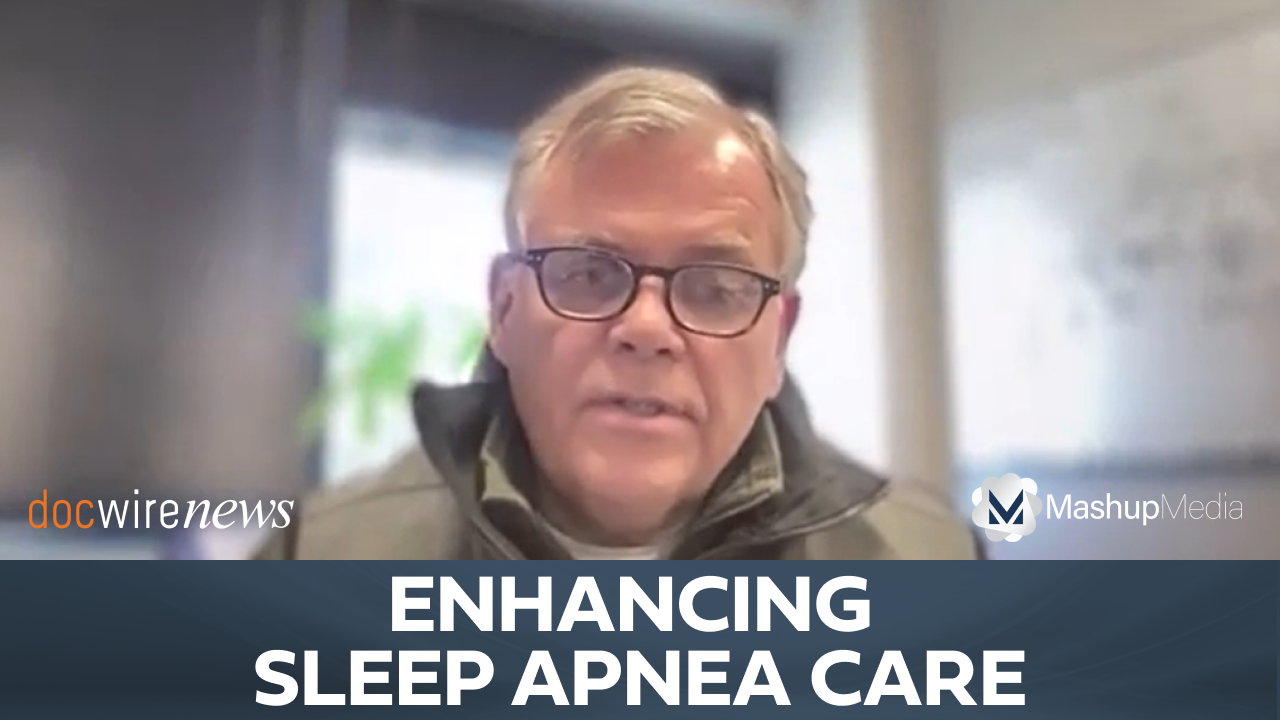A Wrap-up of Notable Updates, Breakthroughs in Sleep Medicine in 2024
By Anne Marie Morse, DO, Rob Dillard - Last Updated: December 27, 2024As 2024 winds down, Dr. Anne Marie Morse provides a run-down of the most important trends, and therapeutic innovations to occur in sleep medicine this year, and what to look forward to in the sleep space in 2025.
DocWire News: What were the most notable trends, and breakthroughs to occur in sleep medicine in 2024?
Let’s take some time to review what we have seen in 2024 from a sleep perspective.
Well, first and foremost, one of the things I would say is that we are seeing exponential rates of, number one, new sleep diagnostics, more advanced ways of analyzing sleep diagnostics, but then the emergence of a variety of new therapeutics that previously have not even been seen, considered, or conceptualized as a part of a way of treating sleep disorders. Now with that stated, I don’t want to stop at just talking about how we’re improving sleep disorders but also how we’re improving on quality of life, wakefulness, as well as other disease states.
When we are looking at 2024, I would say that we are finally seeing this transition point of the ability to start really thinking about sleep and circadian science as a measure or as a tool to be able to optimize our overall health. Finally, we’ve reached an era where we actually are taking into consideration the full 24 hours. Now with that stated, what are some of these notable advancements? Well, I’m going to start off with January of 2024 where we saw the Windred et al paper that really was looking at regularity of sleep and said we’re going to blow out of the water everything we’ve been talking about in regards to duration.
Although we’re thankful to the American Heart Association for starting this momentum of looking at sleep as something that is cardiovascularly protective by looking at duration of sleep, what this paper said was, “Hold on, it actually is the timing and irregularity or the consistency of our sleep-wake schedules that may make the biggest difference.” We saw that, with this paper, it is demonstrating the more regular your sleep, seeing a risk reduction in adverse cardiovascular outcomes or increasing the survival curve by up to 50%. We see this across all disease states. T.
He most notable were definitely in cardiovascular and oncologic spaces, really building on things that we knew already historically, especially with many data up until this point demonstrating that sleep-wake disorders and circadian science being highly influential in risk stratification for cardiovascular health as well as risk related to development of oncologic diseases as well as even potentially looking at is there an impact in our response to medication. We’re going to come back to that in a moment in regards to monumental things that we’re seeing.
Now, you then move forward and there was a lot of rumblings mid-year around the use of GLP-1s and whether or not they’re going to have the data to demonstrate an improvement in obstructive sleep apnea. People were like, “Hold the phone. You mean that there’s going to be treatments that I can utilize that are pharmacologic to treat an obstructive disease?” Well, yeah, that is correct, and the reason for that is we recognize there are various endo-types or biological differences that may contribute to an individual being at risk for obstructive sleep apnea. And so, the study that I’m referring to is the tirzepatide study by Eli Lilly that had demonstrated a significant improvement in obstructive sleep apnea in those who were overweight with moderate to severe obstructive sleep apnea, with or without CPAP.
And so, this I’m anticipating in 2025 for us to be seeing some really profound results in regards to potentially an approval for the use of the first medication for obstructive sleep apnea. Now with that stated, that is not the only medication that is currently being evaluated. We are seeing data that’s demonstrating benefit from other medications. We have the Apnimed medication, which is a combination therapy of utilizing oxybutynin and atomoxetine as a strategy for treating obstructive sleep apnea, and we also see other pipeline agents that are going to be likely available soon. So this now increases our host of different types of options to treat sick or sore breathing, which is a very common etiology.
Other things that we’ve seen are the use of things like DORAs, Dual Orexin Receptor Antagonists. Although they currently come with a labeling for FDA approval in the use of insomnia, we now are seeing an explosion of other areas of the use of these medications. Again, getting to that point of that sleep matters, matters across all diseases. What do I mean by this? We’re seeing that this is an effective medication that has been shown to be beneficial when you’re helping individuals on their substance use disorder journey in terms of being able to maintain abstinence while also being able to improve their sleep. This makes a lot of sense in a variety of reasons. Number one, we recognize the presence of a sleep disorder in someone who is trying to abstain from utilizing any substance, is going to make it much more likely for them to have a relapse, so makes all the sense in the world.
When we’re talking specifically about something like opiate use disorder, we recognize there is an up regulation of the amount of orexin neurons in the brain, however, they’re smaller in size, but it doesn’t mean that they’re that much less productive. And so, by being able to provide something like a DORA we are now mitigating both the orexin I and II pathways, therefore, potentially helping to modify some of that addictive processes. Now, being on the matter of orexins is really going to be talking about what the landmark drugs, really of 2024 that are really center stage across all the sleep conferences. We’re talking about the utilization of the selective orexin-II agonist.
We see that we have the Alkermes drug, ALKS 2680, and Takeda’s Drug, TAK-861, who are really leading the pathway. Alkermes entering into their Phase Two studies with really remarkable data from their Phase One, demonstrating a high degree of efficacy and a really favorable safety profile. And similarly, TAK-861 entering into Phase Three studies, making it that much closer to us seeing this as a reality to be able to prescribe in the clinics. One of the things I find the most favorable when we’re looking at this data is really the fact that we’re seeing monumental improvements not only in something like the Epworth Sleepiness Scale, but objective changes where we’re seeing improvement in the amount of wakefulness as measured by the maintenance of wakefulness test, really experiencing a normalization of that ability to stay awake.
So my favorite quotes to make are really referencing Emmanuel Mignot and Yves [inaudible 00:06:27]. I love to reference Yves when he uses his beautiful French accent and is like, My patients, they say I have narcolepsy no more.” It is really a vision that I think many of us who partner with individuals on their journey with narcolepsy and conditions like idiopathic hypersomnia to be able to actually fulfill that type of dream, because recognizing that this is a REM dissociative disorder where dreaming and instable dreaming is definitely something that is experienced, I would love to fulfill the dream of them waking up and not living with a condition that is so highly burdensome.
We now are also seeing companies like NLS coming back to market. This is a company that had mazindol, which currently is no longer in any current studies. However, reinvigorating themselves with the most recent release of information around favorable P clinical data on the first drugs that I’m aware of that have a dual orexin receptor agonist. And so, that’s going to be very exciting to see in regards to not only conditions like narcolepsy but also beyond that. We recognize that the orexin pathways have implications across a broad area in regards to just medicine in general, in addition to sleep-like disorders, and so I think we really are starting to see a growing opportunity to treat more conditions. Overall, 2024 has brought us a lot of awareness and attention to allow for us to say, what can we do to not only have you sleeping better at night, but for you living every single day, consistently as the best version of you. 2025, more to come, and I look forward to only building on the foundation that 2024 has laid for us.







 © 2025 Mashup Media, LLC, a Formedics Property. All Rights Reserved.
© 2025 Mashup Media, LLC, a Formedics Property. All Rights Reserved.